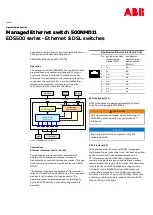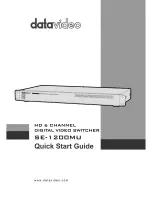
Elements of OSPF Routing
7-11
Dead Interval
The dead interval determines how long neighbor routers wait for a hello
packet before they determine that a neighbor is inactive. A router that
receives a hello packet from a neighbor resets its dead interval timer for
the neighbor.
CAUTION:
Set the dead interval to the same value for all routers on the
same network segment.
Default
The default value for the dead interval is
40
seconds.
Password
You can set security passwords for specific OSPF interfaces.
CAUTION:
Use the same password for all routers on the same network
segment.
Default
The default is no password.
Stub Default Metrics
The stub default metric value determines if an area border router
generates the default route into a stub area. For example, in Figure 7-1,
you configure area border router 1 to generate the default route into
stub area 2.
Virtual Links
You can configure a virtual link between an area border router that links
two nonbackbone areas and a second area border router that is
connected to the backbone area 0. The nonbackbone area through
which the virtual link runs is called a
transit area
. Virtual links are used to
ensure that the OSPF backbone is contiguous. The endpoints of a virtual
link must be area border routers (such as area border routers 3 and 4 in
Figure 7-1). You must configure the virtual link on both routers. Each
router’s virtual link definition includes the other router’s address and the
transit area through which the routers connect (for example, area 3 in
Figure 7-1).
You must configure a virtual link for any area border router that has an
interface connected to a location outside the backbone area. For
example, in Figure 7-1, area border router 4 has an interface connected
to nonbackbone area 1, which makes the virtual link to the backbone
area necessary. You can define up to 32 virtual links per router.
CAUTION:
Do not configure a virtual link through a stub area.
Summary of Contents for CoreBuilder 2500
Page 20: ......
Page 21: ...GETTING STARTED I Chapter 1 CoreBuilder 2500 Extended Switching Features ...
Page 22: ......
Page 31: ...II Chapter 2 VLANs on the CoreBuilder 2500 System VIRTUAL LAN TECHNOLOGY ...
Page 32: ......
Page 44: ......
Page 52: ......
Page 64: ......
Page 70: ......
Page 110: ......
Page 116: ......
Page 154: ......
Page 213: ...V Chapter 15 Remote Monitoring RMON Technology RMON AND THE COREBUILDER 2500 SYSTEM ...
Page 214: ......
Page 226: ......
Page 227: ...VI Appendix A Technical Support APPENDIX ...
Page 228: ......
Page 234: ......
Page 244: ......
















































